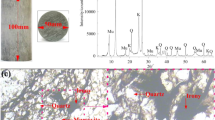Abstract
Many engineering materials demonstrate dynamic enhancement of their compressive strength with the increase of strain-rate, which have been included in material models to improve the reliability of numerical simulations of the material and structural responses under impact and blast loads. The strain-rate effects on the dynamic compressive strength of a range of engineering materials which behave in hydrostatic-stress-sensitive manner were investigated. It is concluded that the dynamic enhancement of the compressive strength of a hydrostatic-stress-sensitive material may include inertia-induced lateral confinement effects, which, as a non-strain-rate factor, may greatly enhance the compressive strength of these materials. Some empirical formulae based on the dynamic stress-strain measurements over-predict the strain-rate effects on the compressive strength of these hydrostatic-stress-sensitive materials, and thus may over-estimate the structural resistance to impact and blast loads, leading to non-conservative design of protective structures.
Similar content being viewed by others
References
Drucker D C. Plasticity theory, strength-differential (SD) phenomenon, and volume expansion in metals and plastics [J]. Metall Trans, 1973, 4: 667–673.
Lu Y B. About Strain-Rate Effects on Hydrostatic-Stress-Sensitive Materials in a Split Hopkinson Pressure Bar Test [R]. The University of Manchester, Second Year Progression Report, 2008.
Chen W, Lu F, Cheng M. Tension and compression tests of two polymers under quasi-static and dynamic loading [J]. Polym Test, 2002, 21: 113–121.
Richeton J, Ahzi S, Daridon L et al. A formulation of the cooperative model for the yield stress of amorphous polymers for a wide range of strain rates and temperatures [J]. Polym, 2005, 46: 6035–6043.
Mulliken A D, Boyce M C. Mechanics of the ratedependent elastic-plastic deformation of glassy polymers from low to high strain rates [J]. Int J Solids Struct, 2006, 43: 1331–1356.
Duan Y, Saigal A, Greif R et al. Impact behavior and modeling of engineering polymers [J]. Polym Eng Sci, 2003, 43: 112–124.
Li Z H, Lambros J. Strain rate effects on the thermomechanical behavior of polymers [J]. Int J Solids Struct, 2001, 38: 3549–3562.
Nizar M M, Masaki O, Hirotsugu I et al. Impact behavior analysis of PC/ABS (50/50) blends [J]. Key Eng Mater, 2005, 297–300: 1297–1302.
Blumenthal W R, Cady C M, Lopez M F et al. Influence of temperature and strain rate on the compressive behavior of PMMA and polycarbonate polymers [M]. In: Furnish M D, Thadani N N, Horie Y Edited. Shock Compression of Condensed Matter. American Institute Phys, Melville, NY, 2002. 665–668.
Siviour C R, Walley S M, Proud W G et al. The high strain rate compressive behavior of polycarbonate and polyvinylidene difluoride [J]. Polym, 2005, 46: 12546–12555.
Rittel D, Brill A. Dynamic flow and failure of confined polymethylmethacylate [J]. J Mech Phys Solids, 2008, 56(4): 1401–1416.
Davies E D H, Hunter S C. The dynamic compression testing of solids by the method of the split Hopkinson bar [J]. J Mech Phys Solids, 1963, 11: 155–179.
Forrestal M J, Wright T W, Chen W. The effect of radial inertia on brittle samples during the split Hopkinson pressure bar test [J]. Int J Impact Eng, 2007, 34: 405–411.
Li Q M, Meng H. About the dynamic strength enhancement of concrete-like materials in a split Hopkinson pressure bar test [J]. Int J Solids Struct, 2003, 40: 343–360.
Comite Euro-International du Beton. CEB-FIP Model Code 1990 [M]. Redwood Books, Trowbridge, Wiltshire, UK, 1993.
Zhang M, Wu H J, Li Q M et al. Further investigation on the dynamic compressive strength enhancement of concrete-like materials based on split Hopkinson pressure bar tests (Part I): Experiments [J]. Int J Impact Eng, 2008 (in Press).
Grote D L, Park S W, Zhou M. Dynamic behavior of concrete at high strain-rates and pressures(I): Experimental characterization [J]. Int J Impact Eng, 2001, 25: 869–886.
Malvern L E, Ross C A. Dynamic Response of Concrete and Concrete Structures [R]. Second Annual Technical Report 1985, AFOSR Contract No. F49620-83-K007.
Tedesco J W, Ross C A. Strain-rate-dependent constitutive equations for concrete [J]. ASME J Press Vessel Technol, 1998, 120: 398–405.
Author information
Authors and Affiliations
Corresponding author
Additional information
LI Q M, born in 1962, male, Dr, reader.
Rights and permissions
About this article
Cite this article
Li, Q.M., Lu, Y.B. Compressive strength of hydrostatic-stress-sensitive materials at high strain-rates. Trans. Tianjin Univ. 14, 324–328 (2008). https://doi.org/10.1007/s12209-008-0055-1
Accepted:
Published:
Issue Date:
DOI: https://doi.org/10.1007/s12209-008-0055-1




